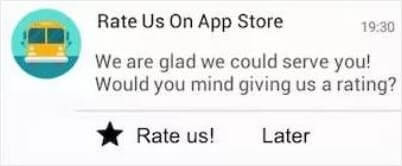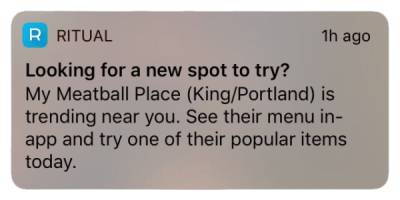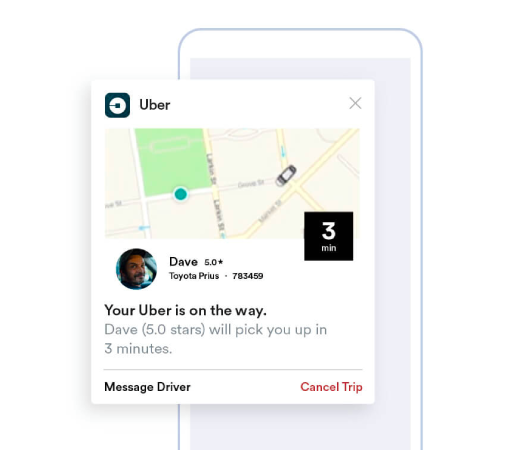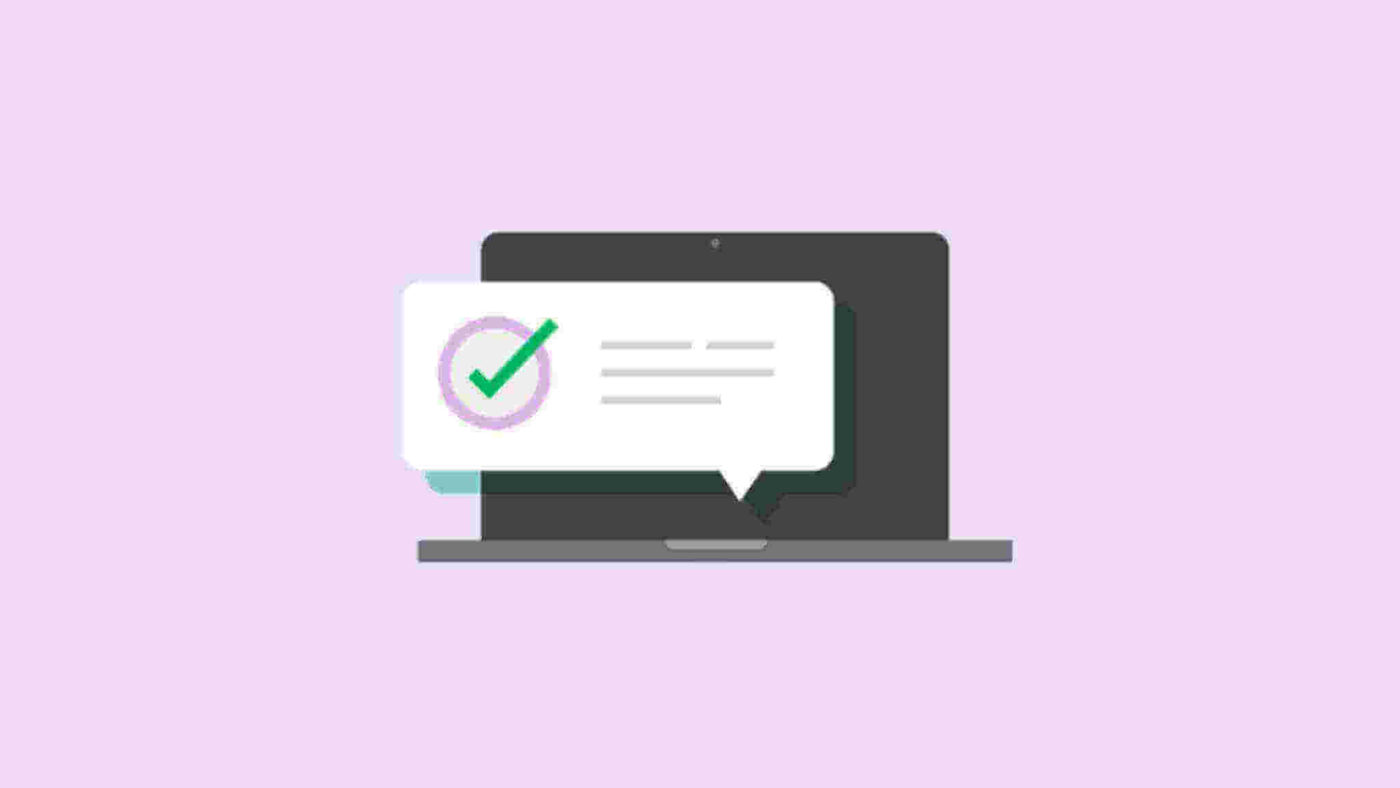What are the types of mobile app push notifications that you can use for your business?
Push notifications are no longer just another buzz on your phone; they’re a lifeline between apps and users. That familiar vibration or chime? It’s more than noise. It’s a chance to connect, engage, and act.
In a world where our devices are flooded with notifications, businesses’ real challenge isn’t simply sending a message. It’s about sending the right message at the perfect moment.
Nail this, and you’re not just sending out alerts—you’re driving user retention, increasing app engagement, and pushing conversions higher. Get it wrong, and those same notifications quickly turn into frustration and lose users.
In this article, we’ll unpack the different types of mobile app push notifications and show you how to use each to elevate user experience.
Send Web and App Push Notifications Today!
Push notifications are a super effective, low-cost marketing tool to help you grow your repeat traffic, engagement, and sales on autopilot.
Types of Mobile App Push Notifications
Whether it’s transactional, promotional, or triggered by user behavior, knowing which push notification to send and when can be the key to fostering loyalty and standing out in a crowded digital landscape.
For e-commerce brands, push notifications become even more powerful with a dedicated mobile app. A Shopify mobile app builder enables eCommerce brands to launch a native mobile app, delivering exclusive in-app discounts, early access to sales, and retargeting users with personalized push notifications.
By leveraging a mobile app, brands can create a more direct and engaging experience, ensuring that every notification adds value and strengthens customer loyalty.
Understanding these notification types helps you craft messages that matter, creating connections that last long after the sound fades away. Let’s check out the different types of mobile app push notifications you can send.
#1. Informative Notifications
Informative notifications are straightforward messages designed to keep users updated. Their main goal is to deliver relevant information, from weather alerts to app updates, without asking for immediate action. These types of mobile app push notifications help build trust by keeping users in the loop, which leads to higher satisfaction over time.

Use Cases:
- A finance app sending updates on stock price changes.
- A travel app providing flight status alerts.
- An eCommerce platform reminding users of a sale ending soon.
Industries like finance, travel, and eCommerce thrive on timely, data-driven notifications. Users appreciate being kept up to date on things that matter to them, which enhances both user retention and engagement.
#2. Promotional Notifications
Promotional push notifications are designed to spark action by highlighting deals, discounts, or exclusive offers. These notifications are about creating excitement around a product or service, encouraging users to make a purchase, or engage with a promotion.

Use Cases:
- Announcing flash sales or limited-time offers.
- Promoting a new product launch.
- Offering personalized deals based on previous user behavior.
The key to successful promotional push notifications is timing and relevance. Sending a well-timed promotion that feels personalized can significantly improve conversions. However, sending too many promotional messages can lead to notification fatigue and user frustration.
#3. Transactional Notifications
Transactional notifications are triggered by a user’s specific actions within an app. These notifications provide users with important updates about their interactions, creating a seamless experience by confirming actions and providing the next steps.

Use Cases:
- Order confirmation from an e-commerce app.
- Payment receipt from a subscription service.
- Appointment reminder from a healthcare app.
By delivering crucial information instantly, transactional notifications offer clarity and enhance trust. Users appreciate being reassured that their actions have been successfully completed, making these notifications essential for apps that handle sensitive transactions.
#4. Geolocation-Based Notifications
Geolocation notifications are triggered based on the user’s physical location. By leveraging GPS data, apps can send highly targeted messages that are relevant to a user’s surroundings, increasing the likelihood of engagement.

Use Cases:
- A retail store sending a discount offer when a user is nearby.
- A weather app pushing out alerts based on current location.
- A travel app suggesting nearby attractions or services.
Location-based notifications feel more personalized and timely, leading to higher engagement. By connecting the user’s real-world context with your app, businesses can create experiences that feel intuitive and useful, driving more foot traffic or app interactions.
#5. Catch-Up Notifications
Catch-up or re-engagement notifications are designed to remind users of tasks they’ve left unfinished or to bring them back to the app after a period of inactivity. These messages help re-establish user habits, reminding them of the value your app provides.

Use Cases:
- A fitness app reminding users to complete their workout for the day.
- A game app congratulating users for reaching a milestone and encouraging them to play again.
- A news app alerting users to trending stories they may have missed.
Personalizing these notifications with specific achievements, past behavior, or interests can create a stronger emotional connection, encouraging users to return to the app. Effective catch-up notifications often spark curiosity or tap into a user’s fear of missing out (FOMO).
#6. Rich Push Notifications
Rich push notifications go beyond basic text and include images, videos, or interactive elements that capture the user’s attention. These types of mobile app push notifications stand out from the standard ones, offering an engaging experience right from the lock screen.

Use Cases:
- A food delivery app showcasing an image of a user’s recently ordered meal.
- A retail app sending a video teaser for an upcoming collection.
- A media app offering a preview of a trending video.
Rich notifications allow businesses to be more creative with their messaging, leading to higher click-through rates. By incorporating visuals or interactive buttons, users can engage with the app without needing to open it immediately.
#7. Reminder Notifications
Reminder notifications serve to nudge users toward completing tasks or achieving goals. These notifications are effective in driving action, as they are often tied to user behavior or commitments.

Use Cases:
- A health app reminding users to take their medication.
- A to-do list app prompting users to complete scheduled tasks.
- A calendar app alerting users of upcoming appointments.
To avoid overwhelming users, reminders should be timed thoughtfully. By aligning reminders with a user’s daily routine or preferences, apps can ensure their notifications are seen as helpful rather than intrusive.
#8. System Notifications
System notifications keep users informed about essential app updates, technical issues, or new features. These notifications are crucial for maintaining a smooth user experience, ensuring users are aware of changes that might affect how they interact with the app.

Use Cases:
- App Updates: Notifying users of new features, security patches, or performance improvements.
- Maintenance Alerts: Informing users about scheduled maintenance that might cause temporary downtime.
- Bug Fixes: Updating users when issues they’ve encountered have been resolved.
- Feature Announcements: Introducing new functionalities that enhance the user experience, such as a redesigned interface or new integrations.
- Privacy or Policy Changes: Communicating changes to terms of service, privacy policies, or app permissions that require user acknowledgment.
While system notifications might not drive immediate engagement, they build trust and keep users loyal by demonstrating transparency. By keeping users informed about critical updates or app changes, your business can reduce confusion, enhance user satisfaction, and strengthen relationships with your audience.
Which Of These Different Types of Mobile App Push Notifications Should You Send?
Understanding the different types of mobile app push notifications is key to crafting messages that engage, inform, and delight users. From timely transactional updates to engaging rich media notifications, each type serves a distinct purpose in the user journey.
By using a mix of these notifications, businesses can deliver personalized experiences that build long-lasting relationships with their users, ensuring that every buzz or chime adds real value.
I recommend using PushEngage. PushEngage is the #1 push notification software in the world. Not convinced? Check out these amazing resources first, then:
- How to Convert Subscribers To Buyers Using Web Push Notifications
- Push Notification Best Practices
- 21 Best Website Welcome Message Examples You Can Use
- Why Welcome Push Notifications Are Important
- How to do Push Notification A/B Testing (Best Practices)
Mobile app push notifications cost you anywhere from $200 to $900 a year for a profitable, small-sized business. For a mid-sized business with more offerings and customer segments, it costs anywhere up to $1200 a year. And for a large enterprise, the push notifications may cost upwards of $10,000 a year depending on the business. Push notifications are still extremely cost-effective compared to other marketing channels.
And if you’re just getting started with a brand new business, you can start with a free plan.
